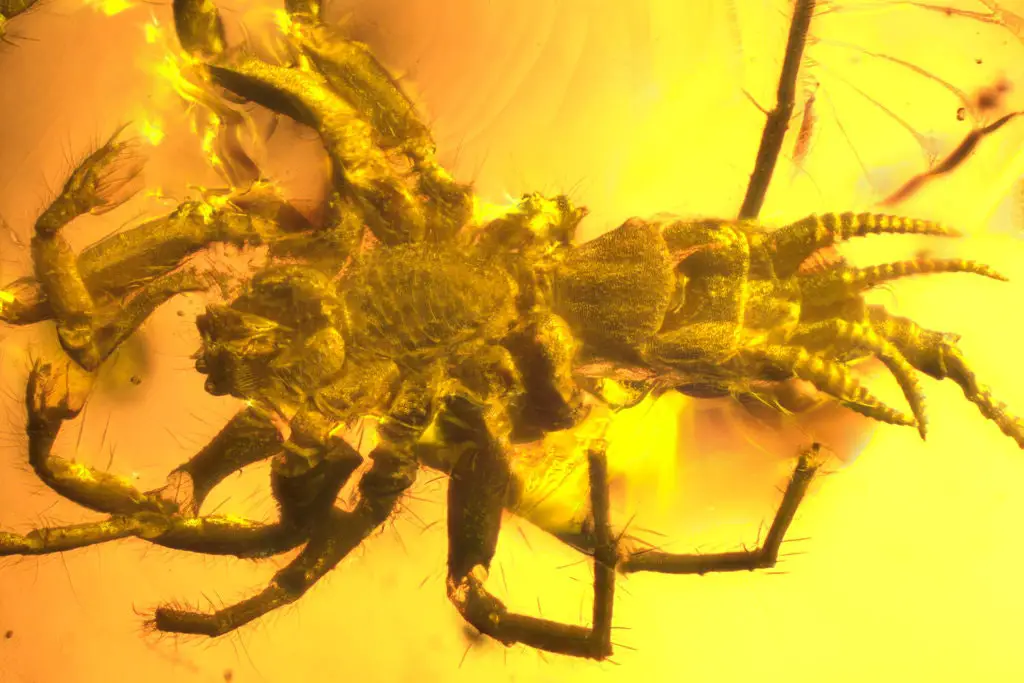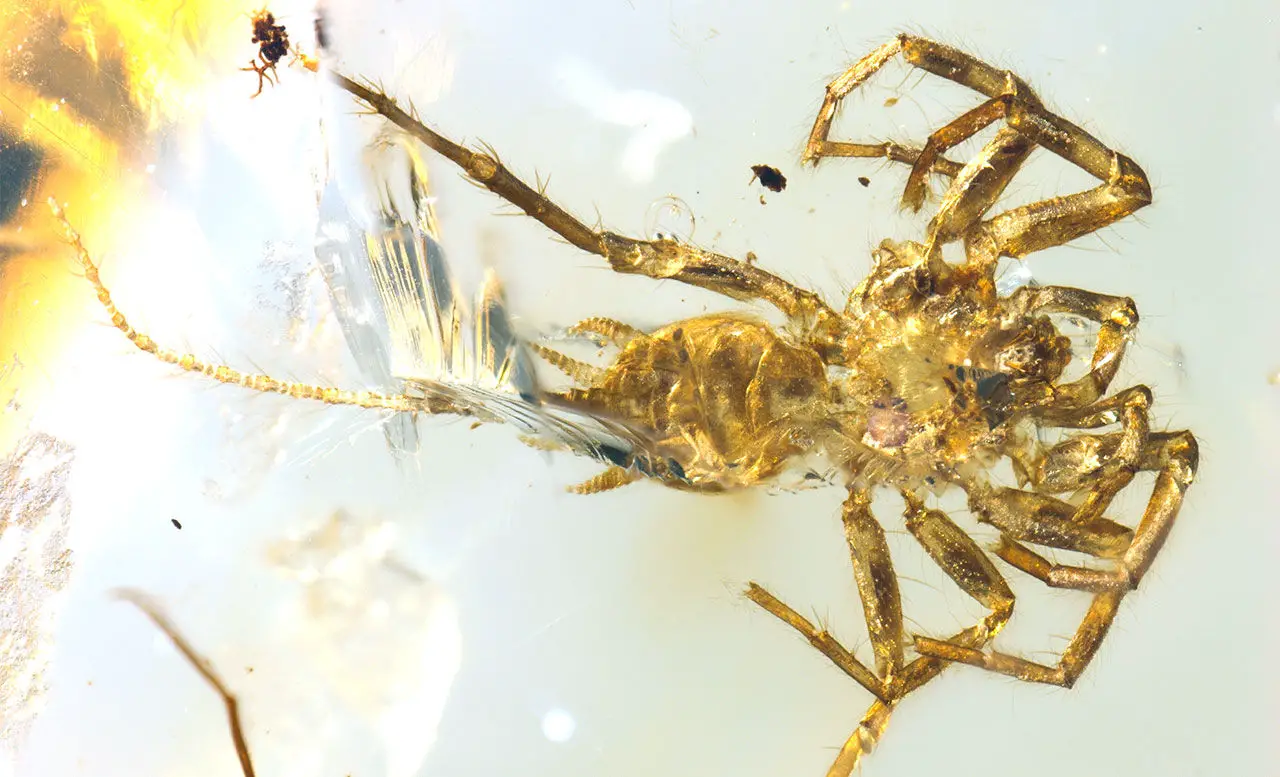100-million-year-old Part Spider Part Scorpion Found In Amber
Tags: opinion

Subscribe to our Youtube channel, new videos every week:
The best way to understand the growth, evolution, and development of spiders and other arachnids would be excavating for amber in Myanmar. While the main purpose will be always be searching for jewelry, who said you couldn’t find a 100 million-year-old part spider part scorpion entombed in one of the pieces of amber? According to Prashant Sharma at the Wisconsin University, such a development would seriously increase the knowledge we have about spiders in general.
Read: Fungi That Absorbs Radiation Has Been Growing All Over Chernobyl Plant
Arachnids comprise of spiders, scorpions, and ticks, and amongst these cretins, only spiders are famous for having spinnerets- the part of the limb that helps them spin webs. Considering spiders have been here for around 300 million years, they have had quite a long time to find their niche in the animal kingdom. Also, male spiders have developed a new‘leg’ which is present between the fangs, and which helps them insert sperm inside the female. Spiders mostly have backs that are smooth since primordial times, while scorpions have segmented backs- something they have inherited from their ancestors around 450 million years back.
In 1989, there was a discovery made by researchers where they found a spigot bearing fossil, said to be aged quite a lot older than the modern spider. In 2008, paleontologists found out that this arachnid wasn’t a true spider, merely a relative. Therefore, they were put in the category of Uraraneida, which has been considered to be a thriving, growing species some 400- 250 million years ago.

Image: Wang Bo
Quite a few years back, dealers of fossils approached a couple of paleo-biologists, with what was a 5-inch long Uraraneida trapped in amber. The first biologist Wang Bo decided to look into the matter by getting a team of specialists who found out that this cretin belonged to a different genus of arachnids. They actually named both the spiders as Chimerachne yingi. The other paleo-biologist, Huang Diying too arrived at the same conclusion after getting his own team together. While both teams had no clue about the other’s existence, the conclusion drawn was the same. Greg Edgecombe of the Natural History Museum in London mentioned that the genus so discovered was the closest relative of the spider which had gone extinct.
The specimen of one of the groups provided several high-resolution images of both the spiders- one with the upper body, the other with the lower. And this was reported in Nature Ecology and Evolution by Huang and his members. Prashant Sharma mentions that the degree of fossilization enabled transparency in the viewing- thereby allowing for the easier identification of the spider’s anatomy. Also, it was deduced that spinnerets and sperm appendages were quite early modifications in the spider’s body.
Read: Soldiers Of The Australian Army Are Volunteering To Take Care Of Injured Koalas
But what separated these spider relatives from today’s spiders was the presence of a long segmented tail, similar to that of a scorpion. This made most researchers believe that the arachnids of old had traits that weren’t necessarily theirs but borrowed, to begin with. Also, the amber they were fossilized in was aged at around 100 million years. This signifies that these spider relatives caught their prey along with normal spiders at the same time.
Quite creepy, if you ask us.
Featured image: Huang Diying100-Million-Year-Old Part Spider, Part Scorpion Creature Captured In Amber
Leave Comment: